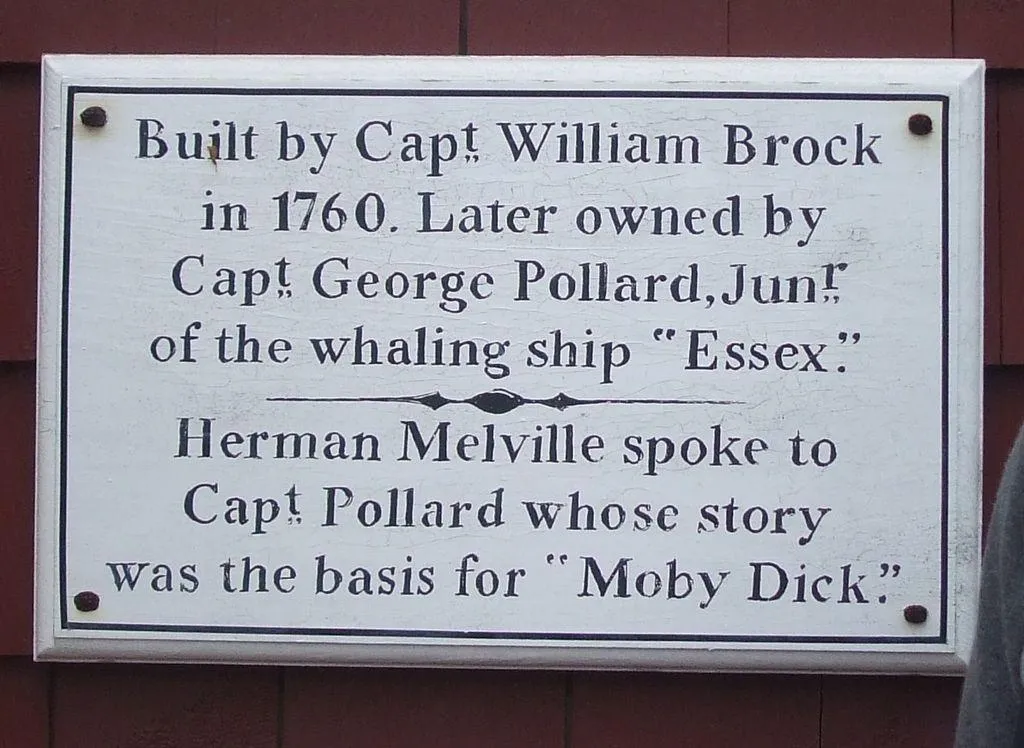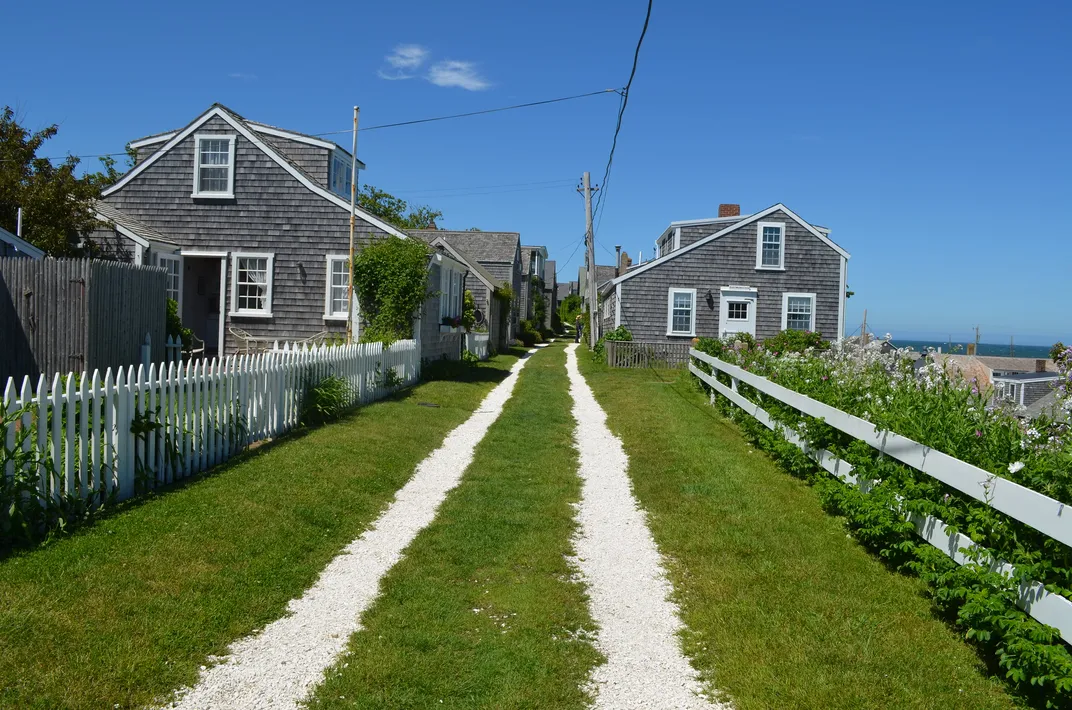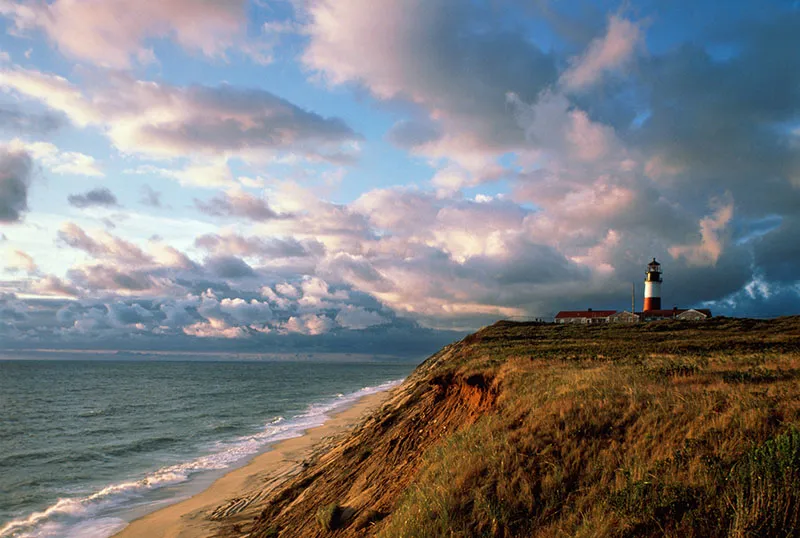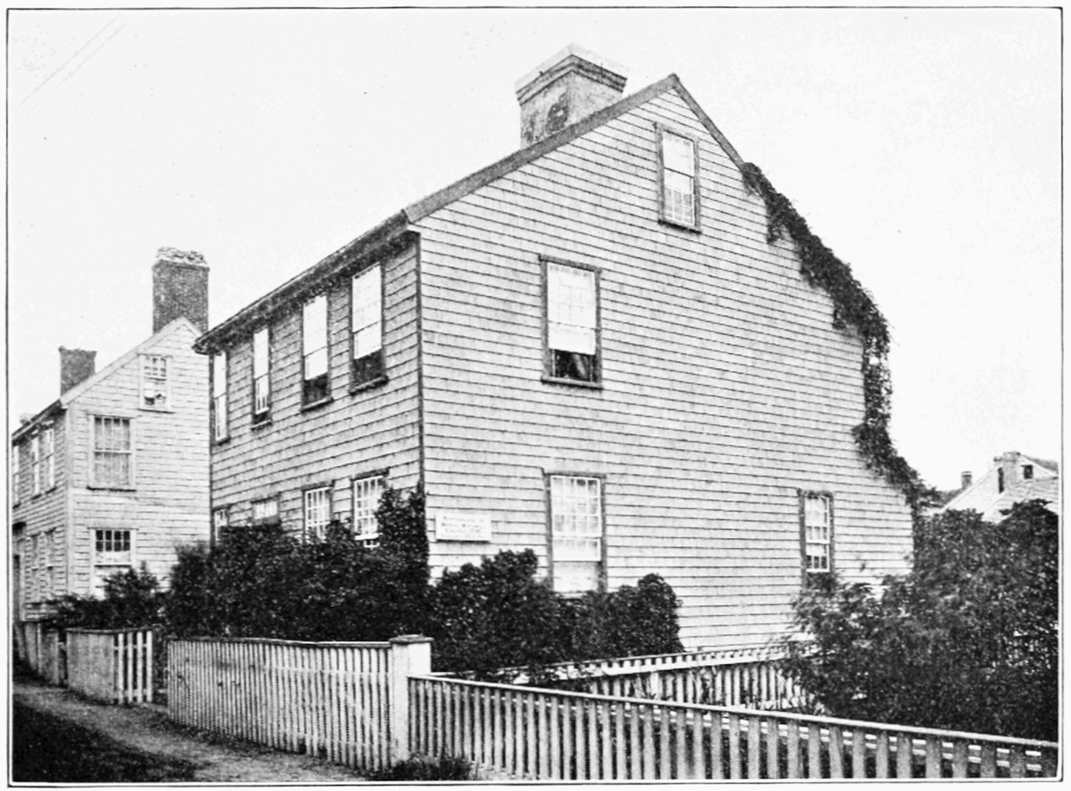Follow Herman Melville’s Footsteps Through Nantucket
The writer visited the island off of Cape Cod only after he penned Moby Dick
/https://tf-cmsv2-smithsonianmag-media.s3.amazonaws.com/filer/c7/90/c7906265-9fd0-4852-8198-ee1f7a86ffba/nantucket.jpg)
In 1820, when Herman Melville was just a year old, a whale attacked the Nantucket whaling ship Essex, causing the captain and crew to be stranded for months and resort to cannibalism to survive. The story fascinated him his entire life, and when he took to the sea himself—first, at age 20, as a cabin boy on a merchant ship sailing across the Atlantic and later working on whaling vessels, an adventure that got him caught by cannibals, arrested for mutiny, and eventually enlisted into the Navy—he formed a base level of experience to compose an allegorical novel about the event.
When Melville had a heart attack and died on September 28, 1891, he was a far cry from the famous writer he is today. Moby Dick, published in 1851, wasn’t recognized for the masterpiece it is until the 1920s, when critics and scholars began to recognize its allegorical qualities about 19th-century American life.
Interestingly, as well-traveled as Melville was, visiting places like Hawaii, England, Tahiti and Jerusalem, he hadn’t even been to Nantucket prior to writing Moby Dick. He visited the island afterwards, though, on a two-day trip in July of 1852, to explore the landmarks and meet with Captain George Pollard Jr., who captained the Essex.
Now, 200 years after Melville's birth, visitors can follow the author’s footsteps through the town he immortalized in his writing.
Jared Coffin House
Melville and his father-in-law, Massachusetts Chief Justice Lemuel Shaw, traveled to Nantucket together. They stayed at the Ocean House hotel, which is now known as the Jared Coffin House. The duo’s room overlooked Captain Pollard’s house on Centre Street. Jared Coffin, a successful ship owner from the island’s whaling heyday, built the house in 1845 as a family home. It was Nantucket’s first mansion. The following year, the Nantucket Steamboat Company bought the house and turned it into lodging, naming it the Ocean House. It operated until 1961 (minus a few years during World War II, when it was occupied by the Coast Guard). The Nantucket Historical Trust bought it that year and set about restoring the property. Today, it’s still a hotel, owned by Nantucket Island Resorts.
Captain Pollard's House

By the time Melville visited Nantucket, Captain Pollard (the captain of the Essex) had retired from whaling and was working as the town’s nightwatchman. Locals say that when Melville stayed at Ocean House, he would wave at Pollard from the front stoop as he tended the streetlamps at night. Pollard’s house was on Centre Street (across from Ocean House), and today it has a plaque that says, “Built by Cap’t William Brock in 1760. Later owned by Cap’t George Pollard, Jun’r of the whaling ship ‘Essex.’ Herman Melville spoke to Cap’t Pollard whose story was the basis for ‘Moby Dick.’” When the two men met, they only said a few words to one another—though that meeting alone inspired more work from Melville. “To the islanders he was a nobody,” Melville later wrote, “to me, the most impressive man, tho’ wholly unassuming, even humble—that I ever encountered.” He mentioned Pollard again in his poem "Clarel":
A night patrolman on the quay
Watching the bales till morning hour
Through fair and foul. Never he smiled;
Call him, and he would come; not sour
In spirit, but meek and reconciled:
Patient he was, he none withstood;
Oft on some secret thing would brood.
‘Sconset

Melville visited the quaint village of ‘Sconset, or more accurately Siasconset, on his trip, when the area was still rife with fishing shanties from the 1700s and 1800s (many of which have been turned into small cottages by now). His journey to ‘Sconset was part of a carriage tour of the island. The village likely inspired a book he wrote but never published; Melville wrote frequently to Nathaniel Hawthorne about the story, which centered around a woman named Agatha whose fisherman husband disappears. Agatha checks the lighthouse mailbox every day for 17 years, hoping for a letter from her lost love.
Visitors today should be sure to explore the rows of rose-covered, gray-shingled houses and the beach. The ‘Sconset Bluff Walk isn’t much more than a footpath along the bluff, but it passes some opulent summer homes beside the water—many of the residents in these homes tend to the path throughout the year—and culminates at Sankaty Lighthouse after a short jaunt on Baxter Road, because shoreline erosion has destroyed the last half mile of the trail. ‘Sconset’s Bluff Walk exists thanks to William J. Flagg, one of the island’s developers in the later 1800s. He wanted to preserve the scenery and town, so in the deeds to all his home lots, he required a public right of way through the village.
Sankaty Head Lighthouse

When Melville visited Nantucket, he and his wife, Elizabeth Shaw, lived in the Berkshires and were close friends with author Nathaniel Hawthorne, who lived nearby. Melville sent Hawthorne a letter about his visit to Sankaty Head Lighthouse at the easternmost point on the island. “The air is suppressedly charged with the sound of long lines of surf,” Melville wrote to Hawthorne. “There is no land over against this cliff short of Europe and the West Indies. . . .The sea has encroached also upon that part where their dwelling-house stands near the light-house . . . in a strange and beautiful contrast, we have the innocence of the land eyeing the malignity of the sea.” In 2007, the ‘Sconset Trust moved the lighthouse, which was perhaps one more major storm away from falling into the sea, to more stable ground, about 400 feet from its original location. Today, visitors can explore the grounds and climb to the top of the light.
Thomas Macy House
Since Melville hadn't been to Nantucket when he wrote Moby Dick, he learned about the town by poring over historian Obed Macy’s 1835 book The History of Nantucket. Macy died in 1844—so when Melville visited in 1852, he didn’t meet the author, but instead met his son, Thomas Macy. They met at the Macy’s house (now known as the Thomas Macy House) to eat together. The historic home, open daily from late May to mid-October, is just as its last owner, Jacqueline Harris, who bought the home from the Macy family in 1947, left it, when she passed away and the Nantucket Historical Association took ownership of the house in 1987. Visitors today will learn about the history of the Macy family and the house, see Eunice (Thomas’ wife) Macy’s gardens, and explore Harris’ collection of antiques throughout the home.
Mitchell House

Maria Mitchell is widely considered to be the first female astronomer in America. In 1847, she discovered a comet, which was dubbed "Miss Mitchell's Comet," or more formally, C/1847 T1 . Her love of astronomy came to her by way of her astronomer father, William. When Melville visited the island, he spent some time with both father and daughter at their home on Main Street. Maria inspired Melville so much that he eventually worked her into one of his poems, "After the Pleasure Party"—she inspired the poem’s character Urania. The Mitchell House, built in 1790, has been a museum since 1903. Visitors can take a guided tour and also see a number of Maria’s belongings—including the telescope with which she spotted the comet.
Planning Your Next Trip?
Explore great travel deals
Smithsonian magazine participates in affiliate link advertising programs. If you purchase an item through these links, we receive a commission.
/https://tf-cmsv2-smithsonianmag-media.s3.amazonaws.com/accounts/headshot/JenniferBillock.png)
/https://tf-cmsv2-smithsonianmag-media.s3.amazonaws.com/accounts/headshot/JenniferBillock.png)